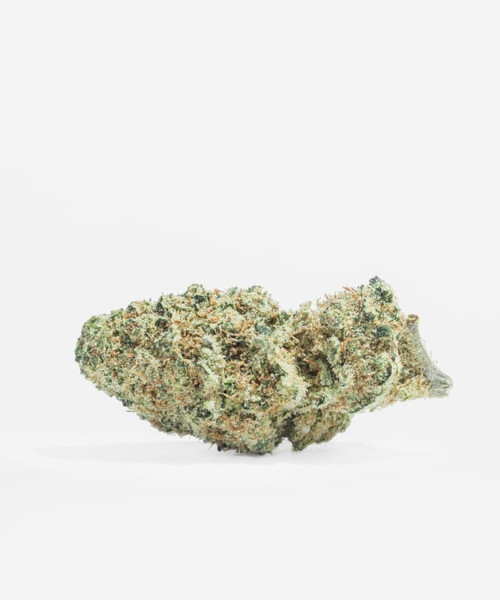Product Overview
What Is The Difference Between the Hemp and Cannabis Plant?
Hemp is a plant in the Cannabis family. This family of plants includes Cannabis: indica, sativa, ruderalis, and hemp. All of these plants naturally produce cannabinoids (CBD, THC, CBG, etc.) but in different ways and varying amounts. Both hemp and other cannabis plants contain CBD, but there’s a much higher percentage in hemp. Hemp also has much lower levels of THC (less than 0.3%) than other forms of cannabis. Industrial hemp is grown to be durable, have very long stalks and as few flowering buds as possible—this can make it easier to extract the high amounts of CBD and smaller amounts of THC. Hemp’s chemical profile means that you can’t get “high” from it, and it is used to create medicinal remedies, food and oil, as well as other products, including rope, bricks, natural polymers, fiber, clothes and many more. psychoactive strains of cannabis are typically smaller, flimsier and have many flowering buds with the sole purpose of maximizing the concentration of THC. Marijuana is used recreationally and medicinally only.
Is CBD the only cannabinoid in the hemp plant?
No. CBD is one of many cannabinoids within the hemp plant, but it’s currently the most popular one being researched for potential wellness benefits.
In what ways are the Hemp and other forms of cannabis different? Where can I order CBD products online legally?
Hemp is different from other forms of cannabis in its function, cultivation and application. But these differences didn’t stop our political leaders from getting confused and accidentally grouping all forms of cannabis as a Schedule I Drug and banning it in 1970 under the Controlled Substances Act. You can order CBD legally online from our friends at Yin Yang Infusions!
Psychoactive cannabis, or “marijuana” as it is widely known, is used for medicinal or recreational purposes. Many states are slowly legalizing recreational cannabis, but cannabis remains federally illegal. An amendment to the 2018 Farm Bill legalized hemp in the U.S. but other forms of Cannabis remain schedule one, meaning they are considered to have no medicinal benefit.
Today, hemp can be used in a variety of ways that other forms of cannabis cannot due to federal regulations. These include healthy dietary supplements, skin products, clothing, and accessories. Today, you can buy legal hemp products not just online, but in many grocery stores and everyday businesses. Overall, hemp is known to have over 25,000 possible applications.
Even after almost 50 years, the government still seems to have some confusion in distinguishing the two plants. Despite the recent legalization, federal policies surrounding hemp growing and sales of hemp products are often still up in the air, and banks continue to treat hemp businesses like criminals. In some rare cases, there are still arrests over hemp, such as truckers arrested while transporting completely legal hemp. Recently, people have started smoking hemp in the form of pre-rolled cigarettes, or bought as “buds” that look similar to Cannabis indica and sativa strains. Smoking “hemp flower” can be very relaxing, but it won’t make you “feel high” like smoking marijuana. That’s because these legal hemp buds are high in a compound called CBD, but extremely low in the compound THC. Keep reading to learn more about these cannabinoids.
Chemical Makeup-
The main difference between the two is in its chemical composition, specifically in tetrahydrocannabinol (THC). THC is the chemical responsible Cannabis indica and sativa's psychological effects. An average batch of cannabis contains anywhere from 5-20% THC content. Some premium cannabis can have up to 25-30% THC. Legal hemp, on the other hand, has a max THC level of 0.3%, essentially making it impossible to feel a substantial psychoactive effect or get a “high.” There are some higher THC hemp strains, testing above the legal limit, but these are not available for sale in interstate commerce. This threshold is heavily regulated in other countries that have legalized hemp. Hemp also has high cannabidiol (CBD) which offers numerous unique benefits.
Appearance-
Cannabis indica and sativa often looks different from hemp. When you observe their leaves, Cannabis indica and sativa's shape tends to either be broad leafed, a tight bud, or look like a nugget with tiny hairs or crystals. Hemp, on the other hand, has skinnier leaves that’s concentrated at the top. Few branches or leaves exist below the top part of the plant. When you observe the plants from afar, cannabis looks like a short fat bush. Hemp, especially hemp grown for fiber or seed, is typically skinnier and taller (up to 20 ft). At times, it almost looks like long ditch weed – hemp was actually found to grow among weeds in Nebraska, Kansas and many other states. In general, when you compare a cannabis farm with those of industrial hemp, you’ll notice that they are clearly very different from one another.
Cultivation-
The environment in which hemp and cannabis are grown are often strikingly different. Hemp is grown closely together (as close as 4 inches apart) and are typically grown in large multi-acre plots. It can also grow in a variety of climates and its growth cycle is 108-120 days. There are numerous varieties of hemp, which can be grown for fiber, seed, or CBD content. Unlike hemp, cannabis requires a carefully controlled, warm, and humid atmosphere for proper growth. Its growth cycle is only 60-90 days. Medical cannabis also cannot be grown too close to each other. They are typically grown 6 feet apart.
These statements have not been evaluated by the FDA. This product is not intended to diagnose, treat, cure, or prevent any disease. Consult your physician before using this product.







